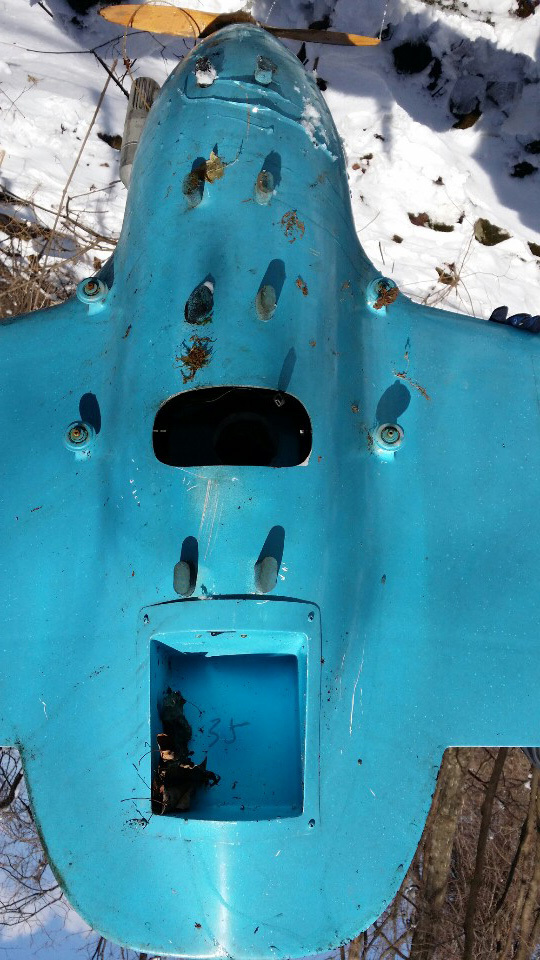Calls are rising for disciplinary action against military leaders responsible for failing to block apparent North Korean drone activities, which have revealed vulnerabilities in the country’s air defense.
Ruling and opposition party lawmakers alike denounced the military for its ill-preparedness after three drones, presumably from the communist state and used for espionage purposes, were found in both eastern and western frontline areas.
“The Defense Ministry should carry out an internal inspection to find out who is responsible for the failure to block those drones and what went wrong with the military’s air defense,” Rep. Rhee In-je of the ruling Saenuri Party said during a radio interview.
“Should there be things that the defense minister himself should be held accountable for. He should make his own decision whether to step down or not.”
The main opposition New Politics Alliance for Democracy upped their offensive against the government, highlighting the military’s inability to cope with the new threat.
“It seems that there will not be any disciplinary action taken against anyone responsible (for the drone infiltrations). When our air defense proved to be porous, there was no one to take responsibility for that,” said NPAD lawmaker Jin Sung-joon during a meeting with senior party officials.
A day earlier, President Park Geun-hye chided the military for allowing the drones to enter South Korea’s airspace. But observers say that disciplinary action against top military leaders is unlikely for now, as there needs to be robust defense to deter an increasingly provocative Pyongyang.
The North has warned of a new form of nuclear test and reportedly plans to launch additional ballistic missiles.
Meanwhile, Seoul’s Defense Ministry said that Pyongyang has more than 300 drones including 10 unmanned aircraft designed for strike missions.
The communist state has some 300 “Banghyon” drones that are used for reconnaissance missions or as target drones used to test surface-to-air missiles. Pyongyang imported Chinese-made D-4 drones, modified them to make the Banghyon drones and deployed them to frontline units.
In addition to the Banghyon aircraft, the North has about 10 attack drones and uses 10 Russian-made Shmel drones for test purposes. It is also developing the “Durumi” unmanned aircraft.
 |
A suspected third North Korean drone found on a mountain in Samcheok, Gangwon Province, Sunday. (Yonhap) |
The drones, recently discovered in border regions, are thought to have been sent from units some 15-20 km from the Military Demarcation Line, a government source said.
“Based on our comprehensive calculations considering the drones’ engines, fuel containers and body weight, it is certain that those drones were sent from North Korea’s frontline units,” the source said, declining to be named.
Government investigators also found that the three drones had operational ranges of up to 130 km. If they were sent from near the inter-Korean border, the drones could reach Pyeongtaek, Gyeonggi Province, where the U.S. plans to relocate its key military bases north of and in Seoul.
Amid public fears over North Korean drones, the South Korean military revealed two high-tech drones, saying it will push to explore various forms of unmanned military aircraft to ensure stronger deterrence against the North.
 |
South Korea’s unmanned reconnaissance aircraft Songgolmae lands during a test flight at an army base in Gyeonggi Province on Tuesday. (Lee Sang-sub/The Korea Herald) |
One was the home-built Songgolmae reconnaissance aircraft which began went into use in July 2005 at an Army unit in Yangju, Gyeonggi Province. The other was the indigenous RemoEye-006, which will be deployed to Army units next year.
The Songgolmae, which measures 4.8 m in length and 1.5 m in height, has an operational range of 80 km. It can fly at 120-150 km per hour at altitudes of up to 4 km. It can hover in the air for four hours.
The 1.72-meter-long RemoEye can fly at a top speed of 75 km per hour at altitudes of up to 3 km. It can hover in the air for around two hours and travel a maximum of 150 km.
South Korea also has Israeli-made drones such as the Searcher and Skylark.
The Searcher, which was first deployed to the 5th Corps in 2005, is being used in the country’s central and eastern operational areas. It has been mobilized to support operations of artillery and mechanized units.
The Skylark was introduced in 2009 as part of efforts to bolster Seoul’s monitoring capabilities in the frontline areas.
By Song Sang-ho (
sshluck@heraldcorp.com)







![[Herald Interview] 'Trump will use tariffs as first line of defense for American manufacturing'](http://res.heraldm.com/phpwas/restmb_idxmake.php?idx=644&simg=/content/image/2024/11/26/20241126050017_0.jpg)
![[Exclusive] Hyundai Mobis eyes closer ties with BYD](http://res.heraldm.com/phpwas/restmb_idxmake.php?idx=644&simg=/content/image/2024/11/25/20241125050044_0.jpg)
